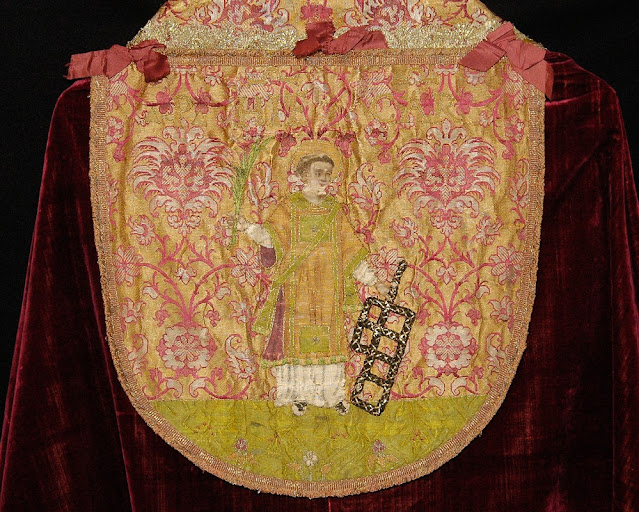For those less familiar with St. Lawrence, he lived from the years 225-258. He was one of the seven deacons of the church in Rome -- in fact, he was the archdeacon -- who was martyred under the Emperor Valerian. As a result of this role, part of his task was to be caretaker of the treasury of the Church and he was in charge of the distribution of alms to the poor. During this period of Roman history, Christians were routinely condemned and executed and their goods were seized and placed in the imperial treasury. During one of these persecutions, Lawrence was captured and was ordered to turn over the treasures of the church of Rome within three days. Famously, St. Lawrence gathered these together but instead he gave them to the poor and then, on the third day, when he presented himself before the Roman prefect he did so with members of the city's poor, stating they were the treasures of the Church. Furious, the prefect ordered Lawrence's execution upon a gridiron set overtop burning coals -- a slow, torturous death. Legend has it that St. Lawrence instructed his tormentors to flip him over, noting that he was 'done on this side' -- a quip thas has made him the patron saint of chefs amongst other things.
Those interested further in the ancient devotion to St. Lawrence in Rome may wish to read our article, Popular Saint of the Romans: Saint Lawrence, Deacon and Martyr, but for today what I wanted to share were some select vestments that have been created with the martyr specifically in mind. Most of them are red, obviously intended for us on his feast day which would call for that colour, while one is white and they span over different centuries -- once again testifying to the saint's ongoing popular devotion.
 |
| ca. 1890-1910 |
 |
| 1937 - This particular example only shows his symbols; the palm of martyrdom and the grid-iron. |
 |
| 1688 |
 |
| ca. 1790-1810 |
This next example is a shield from a cope which belonged to a solemn Mass set. It was the only piece that contained any image.
 |
| 16th century |
Since it is St. Lawrence's feast after all, we may as well also take this opportunity to share two other devotional pieces related to our saint, the first a sculptural reliquary carved in his image, intended to hold a relic of him. The dating on this piece is not exact, but it would come from either the 1600's or 1700's.













